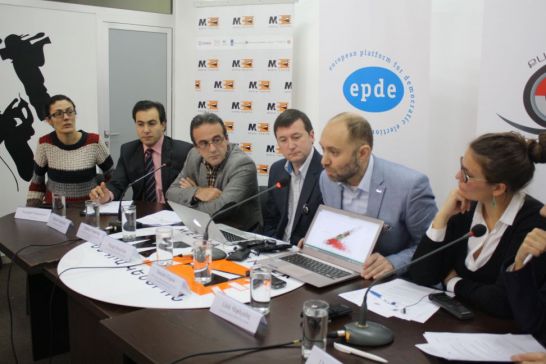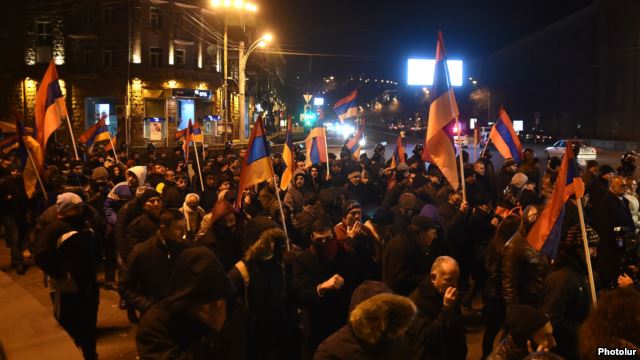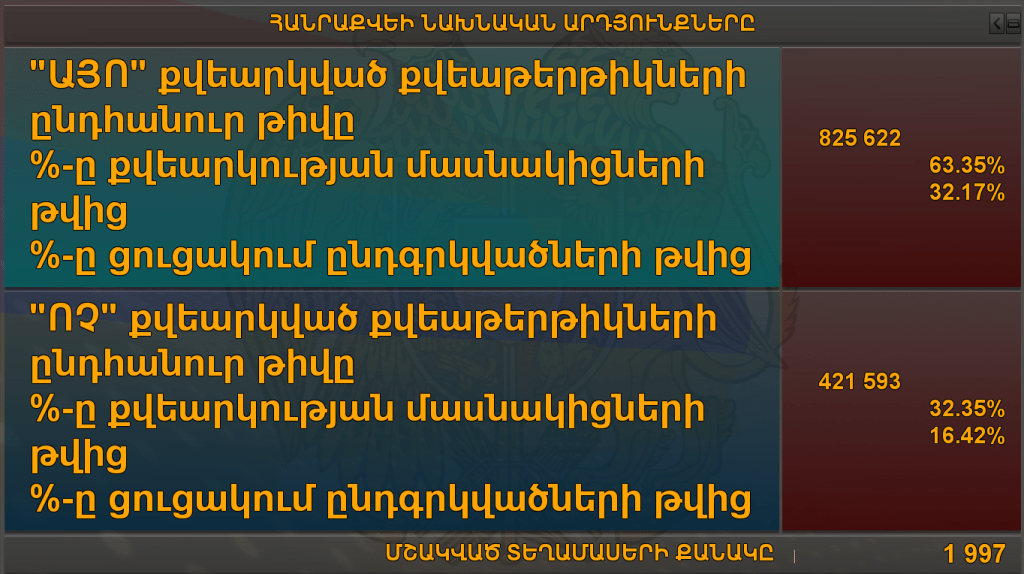Election Observers Share Preliminary Assessments
YEREVAN (A.W.)—Armenia’s Central Electoral Commission (CEC) announced today that 825,622 citizens, around 63.4 percent of eligible voters, voted in favor of the new constitution, amid several reports of violations and irregularities. A total of 1,296,368 people, or around 50.51 percent of eligible voters, participated in the referendum according to figures released by the CEC.
The reforms called for a shift from a semi-presidential to a parliamentary form of government, and will introduce a governmental system in which the powers of the president are drastically reduced, and are almost only ceremonial. Armenia’s president will be elected for a seven-year term (currently a five-year term) by parliament, not a national vote, and can only serve one term.
Armen Rustamyan, member of the Armenian Revolutionary Federation (ARF) Bureau and head of the party’s political affairs, told reporters on Dec. 7 that the country now had a new Constitution, adding that the “no” votes were in essence a rejection of the ruling government, whereas the “yes” votes were cast in favor of the constitutional changes.
“Of course, there is the need for serious examination of the outcomes of the referendum. The substantial number of ‘no’ votes is cause for reflection, and it is consistent with the concerns we had during the campaign. It is our deep belief that the ‘no’ votes are an expression of dissatisfaction with the authorities—the ‘no’ [votes] are directed at the government’s policies; meanwhile, the ‘yes’ votes are directed at the constitutional changes,” he was quoted as saying by Yerkir.am.
Rustamyan said ARF representatives followed proper procedures during the referendum and did their best to prevent violations. He added that since the violations have not been investigated and confirmed, they are one sided; and that those who are speaking about widespread violations were insisting and expecting that the referendum would pass in a fraudulent manner. “We are well aware of what kind of an electoral system we have. The referendum, which was held on Dec. 6, was held in the old electoral system, which has many faults. Those electoral flaws will continue to occur unless we change the old system. We are convinced that these constitutional amendments will create the best foundation for an electoral system that is in line with the standards that will allow for credible elections and referendums. Distrust of [yesterday’s] results stems from mistrust in the electoral system that has accumulated over the years,” he said.
The ARF has been a strong proponent of the constitutional reforms. The party has advocated for a transition to a parliamentary system of government in Armenia since independence. Speaking to reporters after casting his ballot on Dec. 6, ARF Bureau representative Hrant Markarian said that Armenia has the opportunity to form a new political framework with the possibility of real competition. “I’m confident that this is a new beginning for Armenia today,” he said.
Under the new system, Armenia would work with a 101-seat parliament with a 5-year term elected entirely by proportional representation. Under the current system of government, there are 131 members of parliament, with 41 elected in first-past-the-post constituencies and the rest by proportional representation.
Election Observers Share Preliminary Assessments
The Commonwealth of Independent States (CIS) observation mission found the voting in the referendum open and transparent. “The mission considers that the referendum provided the citizens with an opportunity to express their will,” Yevgeny Sloboda, the head of the CIS observation mission, told reporters on Monday. He said that the observers noticed no violations either before or during the voting. “The CIS observers visited 508 polling stations on voting day in all provinces except Syunik. They participated in the opening of the polls, the voting process, and the vote counting. Our observers registered an open and free voting,” he said.
On the other hand, the Parliamentary Assembly of the Council of Europe (PACE) observation delegation criticized the referendum, saying that it was driven by the political interests of the ruling regime. “The relatively low turn-out, around 50 percent of the population, reflects the fact that the referendum was driven by political interests instead of the needs of the Armenian public and was perceived by many citizens as a vote of confidence in the government rather than on the many proposals for change,” read a part of the statement released by PACE.

Citizen Observer Initiative and the European Platform for Democratic Elections found an unprecedented number of violations on Dec. 6. (Photo: epde.org)
The PACE delegation also criticized the voting process, noting inaccuracies of voting lists; allegations of large-scale vote buying, carousel voting, and pressure on voters; an uneven media playing field; the misuse of administrative resources by executive bodies; and shortcomings in the training of precinct election officials. They also urged authorities to address the issues they outlined “in order to build trust in the voting process and in politics in general to ensure a genuinely democratic future for Armenia.”
Citizen Observer Initiative (COI) and the European Platform for Democratic Elections (EPDE), in a joint statement, said they found an unprecedented number of violations on the Dec. 6 referendum. “The referendum campaign was marred by massive misuse of administrative resources to campaign in favor of the constitutional changes and influencing the voting and tabulation process via control of electoral administration on the territorial and local levels. Inaccuracy of voter lists remained the most crucial issue considering the confidentiality of voter participation that leaves room for later manipulations,” read the statement.
The COI and the EPDE also claimed that vote counting was accompanied by several procedural violations. “In several cases, citizen observers and international media representatives were intimidated and hindered in carrying out their monitoring activities. In some polling stations the counting process was interrupted due to obstacles allegedly initiated by PEC members,” the statement read.
Opposition Protests
Several hundred members and supporters of the opposition “New Armenia” movements, as well as supporters of other opposition groups that campaigned against constitutional changes, marched towards the CEC building in Yerevan shortly after the closure of ballots, late Sunday night. Demonstrators protested what they called a referendum that had been falsified by the authorities and were met with a heavy police presence. They also called for the annulment of the results of the referendum.

Opposition supporters rally against the results of the constitutional referendum in Yerevan on Dec. 7 (Photo: Photolur)
Hundreds of protesters gathered again in central Yerevan the following day, to demonstrate against the declared results of a referendum. During Monday’s gathering, Armenian National Congress (ANC) coordinator Levon Zurabian said the government had secured the results through ballot-box stuffing, multiple voting, and vote buying, reported RFE/RL’s Armenian service, Azatutyun.am. Zurabian also rejected the turnout figures, saying that less than half of eligible voters participated.

